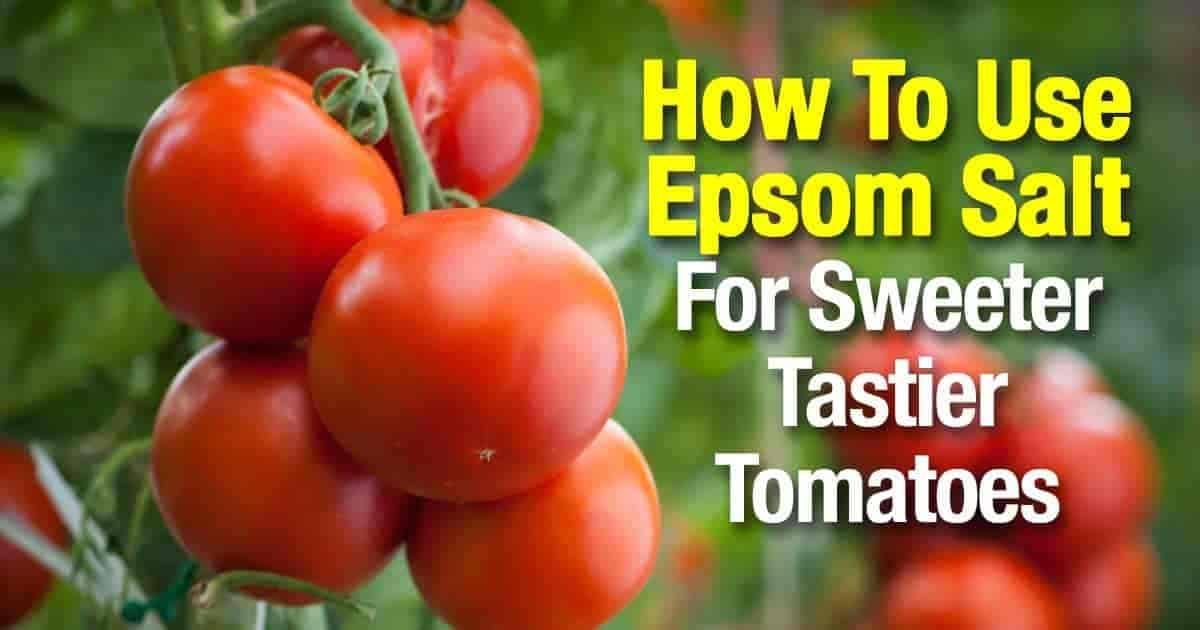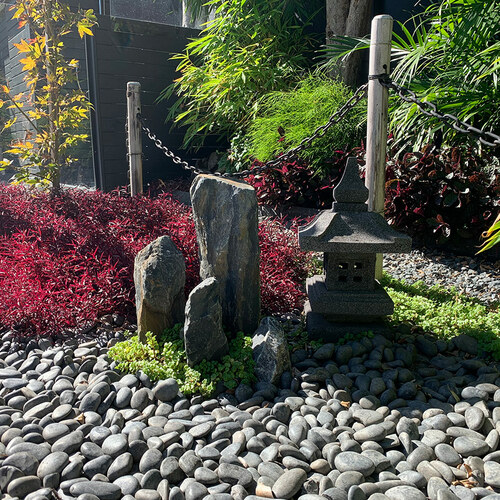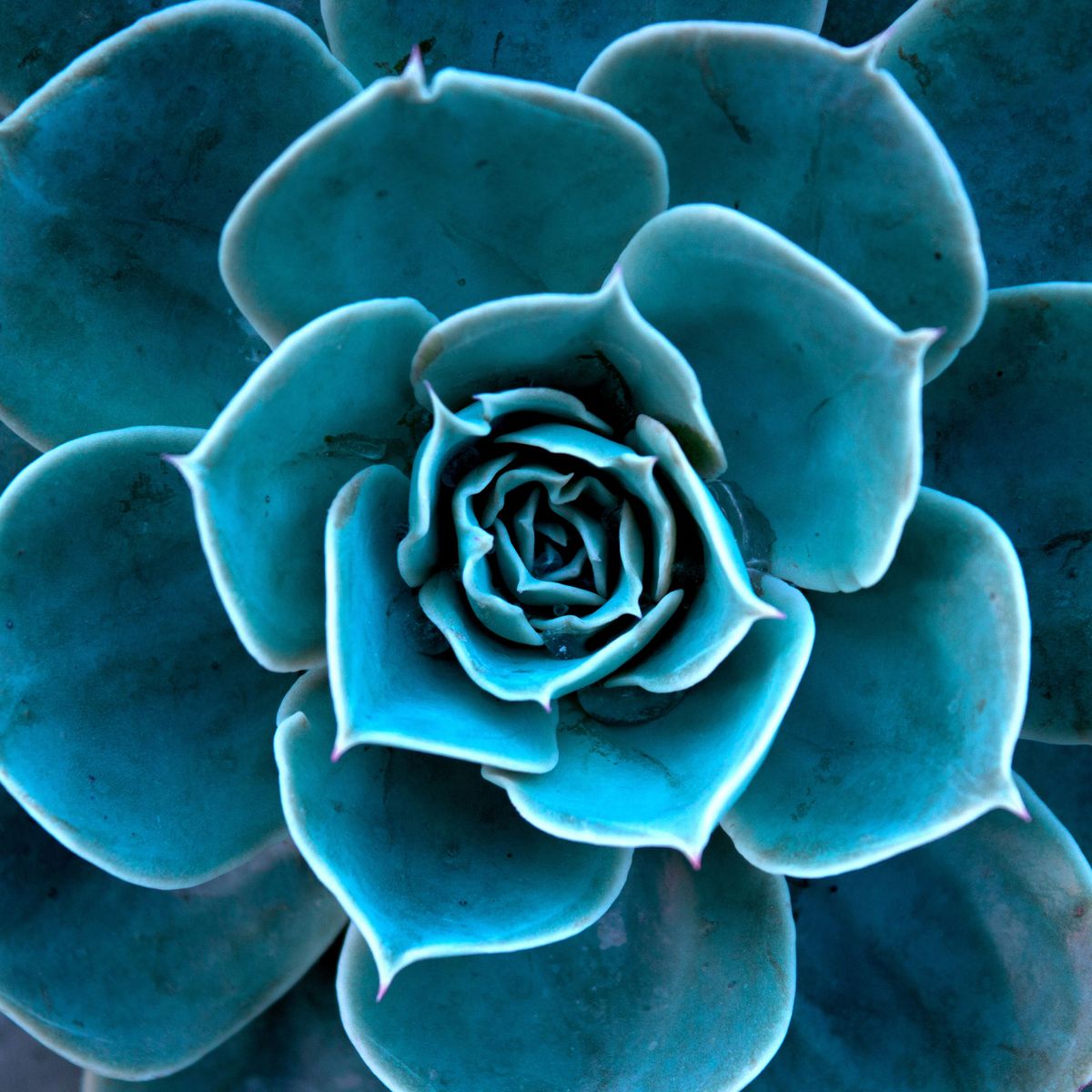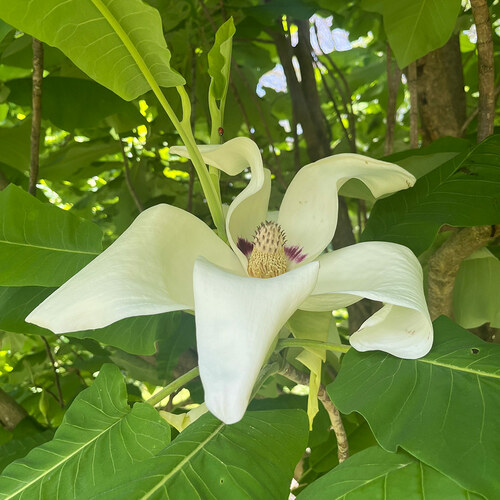You’ve probably heard of using Epsom Salts for personal hygiene. However, using Epsom salt for tomatoes may be something new.
It’s true. Epsom salt can also be used in the garden! and for killing a tree stump.

What Is Epsom Salt?
First of all, Epsom salt is not salt. It is NOT the table salt you put on your food!
It’s actually a compound called magnesium sulfate that occurs naturally. It’s made of magnesium, sulfur, and oxygen.
The name Epsom is a nod to a saline spring found in a part of England by the same name.
Magnesium sulfate is known for providing wonderful benefits when growing tomatoes, functioning as a plant fertilizer to help with magnesium deficiency.
Magnesium is critical for the production of chlorophyll, seed germination, photosynthesis, and fruit development. In contrast, sulfur aids in the production of proteins and enzymes.
Continue to learn how to use Epsom salt for plants.
Incorporate Epsom Salt And Tomato Plants From The Start
#1 For Potted Tomatoes
Before providing Epsom salt, it’s important to do a soil test to check the soil pH and for a magnesium deficiency. Yellow leaves are one sign of a magnesium deficiency. This way, you won’t accidentally put too much on your soil, potentially harming your plant.
So how much Epsom salt per gallon of water?
Dissolve around 2 tablespoons of Epsom salt in 1 gallon of water. Use the solution to water your plants.
How often should you put Epsom salt on plants?
No need to do this every day, though! Instead, use the solution once a month and switch to regular watering for the rest of the days.
#2 When First Planting Tomato Seedlings
When first planting seedlings in the garden, take 1 cup of Epsom salt and sprinkle it liberally over the plot. Ideally, 1 cup of Epsom salt will cover roughly 100 square feet. Make sure you distribute it evenly. Epsom salt will help reduce transplanting shock.
When you’re done, work the Epsom salt into the garden soil. This makes it easier for your tomatoes to obtain micronutrients from the soil, strengthen cell walls, build stronger roots, and burst into healthy blooms.
#3 Tomato Plant Maintenance
Generally, you’ll know if your tomato plants are suffering from a magnesium deficiency if you see tomato yellowing leaves or chlorosis. Do not wait for this to happen! As your tomatoes mature, continue adding Epsom salt to the soil.
How much Epsom salt for plants?
The ideal solution ratio is 1 tablespoon of Epsom salt per foot of plant height. If your tomato plant is two feet tall, you’ll feed it two tablespoons of Epsom salt at least twice a month!
Once on the 15th and another on the 30th would be perfect. For other plants, the general rule is once every six weeks. Opt for the less frequent method and observe how your plants react.
Warning: DO NOT overuse because too much magnesium can lead to micronutrient imbalance and harm your tomato plant.
#4 Applying Epsom Salt As A Soil Drench OR A Foliar Spray
How to use Epsom salt on plants?
Drenching with Epsom salt improves the overall health of tomato plants by giving them a good dose of magnesium.
How much Epsom salt for tomato plants?
If your tomatoes need a boost, mix and dissolve about one or two tablespoons of Epsom salt in a gallon of warm water. Epsom salts help with nutrient uptake.
Drench at the base of the tomato plants and allow the water-salt solution to soak into the ground.
Repeat throughout the season as necessary. Using Epsom salt for peppers will produce the same benefits. You’re essentially fertilizing tomatoes with Epsom salts.
Apply as a foliar Epsom salt spray for plants using the same 1 or 2 tablespoons in a gallon of water every 2 weeks for a boost.
What To Expect When Applying Epsom Salts For Tomatoes
So, what do Epsom salts do for plants?
Epsom salt for tomato plants with the proper application, your tomatoes, you can expect the following results during the growing season:
- Tomato plants are less prone to problems
- The tomatoes bear fruits longer with bigger yields and fruit production
- Improved chlorophyll production with green veins and foliage
- The ripening color is redder than usual and more attractive
- Larger tomato fruits
- The tomatoes are sweet, have better flavor, and are incredibly juicy
- Better seed germination and plant growth
- Improves nutrient absorption
Related: Learn How Epsom Salts Increase the Potential for Tomato Blossom End Rot.
Learn more about tomato plant disease, the condition called blossom end rot (Calcium deficiency), and other problems with 21 Common Tomato Plant Problems and Diseases – How To Fix Them
Of course, Epsom salts may also be used for other plants like pepper plants, not just tomatoes. More on Epsom Salt Garden “Cheats”!
Read: Tomato Q & A Here
Other crops that benefit from Epsom salt include: peppers, rose bushes with brighter colored bloom, Epsom salt for cucumbers, and Epsom salt for garden or Epsom salt for vegetable gardens.
However, remember that using Epsom salt alone will not provide the core nutrients and vitamins needed for growth, including nitrogen, potassium, and phosphorus. So it’s best to add your Epsom salt as part of a homemade fertilizer.
Understand that different plants have different care needs, so you’ll have to do some research based on the crop you intend to grow.












